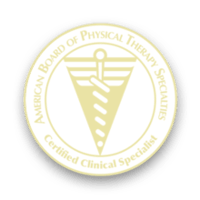Orlando’s Clinic for
ATAXIA PHYSICAL THERAPY
Ataxia is a movement disorder that causes uncoordinated movements. This can cause a variety of movement problems and have a dramatic impact on your overall quality of life. Our proven treatment solutions will restore normal movement patterns and get back to enjoying all of your favorite activities! Don’t let ataxia keep you from doing what you love when a solution is just a few sessions away. Contact our ataxia experts to get started or read more on this page.
Orlando’s Clinic for
ATAXIA PHYSICAL THERAPY TREATMENT
Ataxia is a movement disorder that causes uncoordinated movements. This can cause a variety of movement problems and have a dramatic impact on your overall quality of life. Our proven treatment solutions will restore normal movement patterns and get back to enjoying all of your favorite activities! Don’t let ataxia keep you from doing what you love when a solution is just a few sessions away. Contact our ataxia experts to get started or read more on this page.
Check out our latest education video!

Board-Certified
MEET DR. TARA TOBIAS
Dr. Tara Tobias is a board-certified neurologic physical therapy specialist. With 15+ years of experience, Tara has practiced in every setting including acute care, inpatient rehabilitation and outpatient centers that specialize in a variety of neurologic and balance conditions. Along with this, she has also completed numerous post-graduate courses focusing on the study of neuroplasticity (how the brain learns new skills and forms new connections), motor recovery, and the treatment of balance disorders.
Understanding Ataxia
Ataxia is a sign of dysfunction in the neurologic system. Most likely this will involve the cerebellum in the brain. One function of the cerebellum is to serve as a coordination center. This complex system must receive information, interpret it, and quickly produce a response. The cerebellum is responsible for coordinated movement. Lack of motor coordination can cause slurred speech, stumbling, shaky movements, and falls.
A thorough evaluation by a physical therapist can help to identify systems that are not working properly and to provide the best treatment for the incoordination caused by your ataxia.
Recently diagnosed? Learn more about ataxia

How We Handle
Ataxia
We understand the impact ataxia can have on your life. That’s why our treatment approach focuses on restoring normal movement as quickly as possible. We do this with a serious focus on getting the most work done during your sessions. You’ll be seen exclusively by a board-certified specialist, never double booked, and we’ll never ask you to do unhelpful, monotonous exercises so that we can catch up on paperwork. Getting you back to the activities you LOVE is our one and only focus.
- One-on-One Patient Care
- Only Board Certified Specialists
- Less Paperwork – More Treatment
How We Handle
Ataxia
We understand the impact ataxia can have on your life. That’s why our treatment approach focuses on restoring normal movement as quickly as possible. We do this with a serious focus on getting the most work done during your sessions. You’ll be seen exclusively by a board-certified specialist, never double booked, and we’ll never ask you to do unhelpful, monotonous exercises so that we can catch up on paperwork. Getting you back to the activities you LOVE is our one and only focus
- One-on-One Patient Care
- Only Board Certified Specialists
- Less Paperwork – More Treatment
What Can Cause Ataxia?
Ataxia is a symptom of a problem in the cerebellum. The following is a brief list of issues that may effect the cerebellum to function normally..

Brain Lesions, tumor or stroke
Lesions in the brain, a stroke, or a tumor can result in damage to the cerebellum. Depending on the location of the lesions, can cause ataxia
Our Ataxia Treatment Approaches
Motor Coordination
A physical therapist will select specific activities that force the brain to coordinate arm and leg movement. It is common to start these activities in a safe seating or laying down position. As the movement improves in these positions, the therapist will progress these activities into standing and walking
Activities of Daily living
A physical therapist will also incorporate arm movements that are necessary for dressing, bathing, grooming, and eating.
Static and Dynamic Balance Exercises
The cerebellum is responsible for modulating fine adjustments in the legs and trunk that help the body to stay upright. Ataxia causes these fine adjustments to become uncoordinated and result in what we call “overshooting” or “under-shooting”. A therapist may use a weighted vest to “calm” down overshooting and/or manual techniques to facilitate more appropriate and timely balance response reactions.
Gait Training
Gait training with manual cues to facilitate smoother movement patterns. Repetitive practice with the correct manual cues has been shown to help the brain create new connections.
Contact us to start living a more confident, pain-free LIFE!
Call now to speak directly to a therapist

(407) 900-0841





